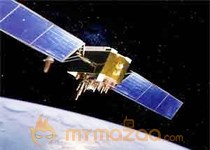India’s mega geostationary satellite GSAT-8 was spinning in an elliptical geo-synchronous transfer orbit early Saturday after an Ariane-V rocket successfully lifted it off the Kourou spaceport in French Guiana, said a top official of the Indian Space Research Organisation (ISRO).”The Rs.260-crore advanced communication satellite was injected into the transfer orbit 31 minutes after a textbook launch at 0208 IST and it started beaming signals to our master control facility (MCF) near Hassan in Karnataka,” S. Satish, director of the state-run space agency, said.
Hassan is about 180 km northwest of the tech hub of Bangalore.
Ariane-V of Arianespace belongs to the European Space Agency (ESA), an international organisation with 19-member states.
The cost of the launch was Rs.300 crore and Rs.30 crore was for satellite insurance.
The 3,093 kg (weight at lift-off) satellite was separated from the rocket’s upper stage at an altitude of 1,800 km and fired into the intended orbit, which is at 35,861 km apogee (away from earth) and 258 km perigee (close to earth) with an inclination of 2.5 degree to the equator.
“Initial checks by MCF have indicated that the satellite’s health is normal and in a three axis stabilisation mode. Steps are underway to fire its 440 Newton liquid apogee motor (LAM) during the third orbit early Sunday to push it to its geostationary orbital slot,” Satish said.
The satellite will be gradually put into the 36,000 km geosynchronous orbit over the next couple of days and its antenna and solar panels will be deployed.
Weighing 1,426 kg (dry mass) in space, the cuboid shaped spacecraft has 24 high-power Ku-band transponders as its payload for direct-to-home (DTH) services from July 1 by state-run and private broadcasters after its induction into the Indian satellite (INSAT) system.
Along with the satellite, a two-channel global positioning system (GPS) aided geo augmented navigation (Gagan) payload will operate in L1 and L5 bands when activated.
Over the next couple of days, the MCF will take complete control of the satellite and conduct the initial orbit raising manoeuvres by using the LAM on board the spacecraft, placing it in the circular geostationary orbit.
After this, the deployment of appendages such as the solar panels, antennas and three axis stabilization of the satellite will be performed.
“The satellite will be positioned at 55 degree East longitude and co-located with INSAT-3E satellite. The designed in-orbit mission life of the satellite is 12 years. The 24 Ku-band transponders will augment the capacity in the INSAT system,” Satish said.
The Gagan payload also provides the satellite based augmented (SBAS) through which the accuracy of the positioning information obtained from the GPS satellite of the US is improved by a network of ground based receivers and made available to users in the country through the geostationary satellites.
ISRO chairman K. Radhakrishnan, who was present at the launch, termed the event a great moment for the country and its space community.
“The user community is looking forward to the activation of the 24 transponders in the INSAT system. The successful launch is a new phase in our communication, application and space system,” Radhakrishnan said soon after the launch of the successful mission.
As the 44th successful consecutive launch, the heavy geostationary workhorse has also carried a dedicated communication satellite for Singapore Telecommunications Ltd. (SingTel) and Taiwan’s Chunghwa Telecom Company.
“Coming less than one month after the previous launch, this 44th success in a row is remarkable and demonstrates the competence of our operational team,” said Arianespace chairman and chief executive Jean-Yves Le Gall.







